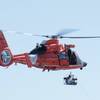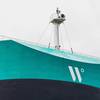Global LNG Imports Up in Q1 by 11%
Despite the liquefied natural gas (LNG) demand in the first quarter of 2019 being negatively impacted by warmer than usual weather in the Northern Hemisphere winter, global LNG imports during the period totalled 88 million tonnes (mt), compared to 79 mt in the first quarter of 2018, or an increase of 11%, GasLog said quoting Poten.
In particular, China’s LNG imports totalled 15.3 mt, 24% higher than the first quarter of 2018.
Europe’s LNG imports in the first quarter more than doubled to 22 mt, compared to 10 mt in the first quarter of 2018, as lower LNG prices made gas fired power generation more competitive than coal, indigenous gas production declined and LNG gained market share from pipeline imports. This more than offset import declines from major North East Asian consumers in Japan, South Korea and Taiwan (10%, 22% and 6% declines year-on-year, respectively), demonstrating the increasingly diverse and broad-based nature of LNG demand growth.
The longer-term outlook for natural gas demand continued to strengthen in the first quarter of 2019. Natural gas is increasingly seen as complementary to renewable energy in the transition away from fuels which emit high levels of carbon dioxide and other harmful emissions.
LNG is expected to be the fastest growing hydrocarbon supply source. In its recent LNG Outlook 2019, Shell, one of the largest players in the global LNG market, forecasts that natural gas would satisfy 41% of global energy demand growth over the 2018-2035 period, with renewables satisfying 30%.
Over this period, Shell forecasts that LNG will be the fastest growing gas supply source, with demand potentially reaching approximately 700 mt in 2035, compared to delivered volumes of 319 mt in 2018.
According to Wood Mackenzie, global LNG supply totalled 88 mt in the first quarter of 2019, an increase of 10% on the first quarter of 2018, principally driven by new supply additions in the U.S., Australia and Russia. For 2019, as a whole, supply is estimated by Wood Mackenzie to be 365 mt, or 38 mt (12%) higher than 2018, driven by the continued ramp-up of 2018 supply additions and new project start-ups in the U.S. (Cameron, Freeport, Elba Island and Corpus Christi Train 2) and Australia (Prelude).
After a brief lull following the elevated levels of new offtake agreements seen in the second half of 2018, activity has recently picked up again with nine new long-term supply agreements agreed or signed for over 10 mt per annum (“mtpa”), according to Wood Mackenzie.
Similarly, the approval process for major new liquefaction projects continues to build momentum, with Wood Mackenzie estimating that, in addition to the Golden Pass project which reached Final Investment Decision (“FID”) in February 2019, 50 mtpa of new capacity should be sanctioned in 2019, encompassing Arctic LNG-2 (Russia), Mozambique Area 1, Calcasieu Pass, Sabine Pass Train 6 (both U.S.) and Woodfibre LNG (Canada).
A further 90 mtpa of capacity could also reach FID in 2019 or 2020, including the Qatar Megatrain expansion, Driftwood LNG and Freeport Train 4 (both U.S.), Rovuma LNG (Mozambique), Costa Azul (Mexico) and the expansion of the PNG LNG facilities in Papua New Guinea.
In contrast to these positive longer-term trends, the first quarter saw relatively weak LNG commodity and shipping markets. A combination of high inventory levels in key North East Asian gas markets ahead of the 2018-2019 winter and relatively mild temperatures during the winter period have led to reduced gas consumption and Asian LNG prices reaching their lowest levels since April 2016.
Low LNG prices, particularly in North Asia, have reduced the incentive in recent months to ship LNG cargoes from the Atlantic Basin to the Pacific Basin, reducing tonne miles - a key driver of demand for LNG spot shipping.
Furthermore, front-end weighting of 2019 LNG carrier newbuilding deliveries and unscheduled downtime at facilities in Australia and Malaysia all added to prompt shipping availability. Poten estimates that the number of monthly LNG cargo imports declined by 19% between December 2018 and February 2019, compared to an 11% decline between December 2017 and February 2018.
There were 57 spot fixtures in the first quarter of 2019, a 19% decrease on the 70 spot fixtures in the same period in 2018. Independent shipowners accounted for 47% of spot fixtures in the first quarter, down from 51% in the same period in 2018, while the average duration of a spot fixture in the first quarter was broadly unchanged year-on-year at 28 days (29 days in the first quarter of 2018).
As a result of these trends in the first quarter, there was ample prompt vessel availability against a backdrop of weaker than expected demand due to warmer than normal winter temperatures. This in turn impacted headline spot LNG shipping rates, fleet utilization, positioning fees and ballast bonuses leading to a marked decline in spot vessel earnings in the first quarter of 2019 relative to the fourth quarter of 2018.
TFDE headline rates, as reported by Clarksons, averaged $60,000 per day in the first quarter of 2019, compared to $68,000 per day in the first quarter of 2018 and $150,000 per day in the fourth quarter of 2018.
Headline TFDE spot rates are currently assessed at $34,000 per day, with rates having stabilized in recent weeks as charterers look to capitalize on the recent fall in rates to lock in shipping capacity for the remainder of 2019 and into 2020.
"We expect that prompt vessel availability will decline throughout 2019 and 2020 given the significant forecast LNG supply additions outlined above. As a result, we expect spot shipping rates to rise from current levels, with the magnitude and duration of that recovery dependent on several factors, particularly the pace and location of demand growth and cooling and heating demand during the Northern Hemisphere summer and winter respectively," said GasLog, an international owner, operator and manager of LNG carriers.
According to Poten, as of April 17, 2019, the LNG fleet and orderbook (excluding floating storage and regasification units (FSRUs) and vessels with capacity below 100,000 cbm) stood at 491 and 110 vessels respectively.
Of the LNG carriers in the orderbook, 67, or 61%, are chartered on long-term contracts. 14 vessels were ordered in the first quarter of 2019, compared to 17 and 20 vessels in the first quarter of 2018 and the fourth quarter of 2018, respectively. These figures provide early indications that newbuild ordering may be slowing somewhat compared to newbuild ordering in 2018.
" This is a positive development which we believe is necessary to avoid an overbuilt market in 2021 and 2022, a period when LNG supply additions are forecast to slow before increasing again in 2023 and 2024," it said.










